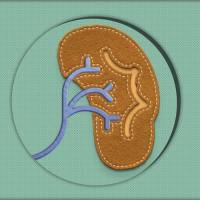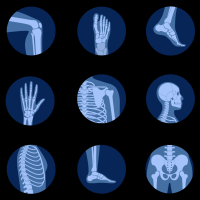【社会人文】健康与邻居相关
Health tied to neighbourhood
Income key but location can make you healthier: Survey
Nov. 22, 2006. 10:04 AM
ISABEL TEOTONIO
STAFF REPORTER
We're not as fat, we don't smoke as much and we're not as stressed as people in other major Canadian cities, according to a national study released yesterday.
But when you get down to the neighbourhood level, the disparities between the health of Torontonians are great — particularly between high- and low-income earners.
The joint study (download the report), carried out by the Canadian Institute for Health Information and the Canadian Population Health Initiative, is the first of its kind to compare health outcomes and behaviours in Toronto, Montreal, Halifax, Vancouver and Calgary.
It also looks at neighbourhoods and housing and related social issues in an attempt to explain what influences health.
The amount of green space, how safe people feel on the streets, the availability of public transportation, if people know their neighbours and even how much of their income they spend on housing all have an impact.
Compared with other cities, Toronto's not perfect.
In fact, when asked how we would describe our health, only 56 per cent of youth and adults described it as excellent or very good, compared with 67 per cent in Calgary, 63 per cent in Halifax, 59 per cent in Vancouver and 58 per cent in Montreal.
"In Toronto, we're certainly doing some things right — we are less likely to be obese than other cities across the country, less likely to be engaged in heavy drinking, but we're also less likely to be physically active," said Jennifer Zelmer, vice-president of research and analysis at the institute.
The report focuses on five socio-economic indicators: income, education, recent immigration, single-parent families and the number of people living alone.It found that only 27 per cent of Torontonians lead a healthy lifestyle, which is defined as being active, not smoking and drinking less than five alcoholic drinks per sitting. By comparison, 35 per cent of Vancouver residents, 28 per cent in Calgary, 22 per cent in Montreal and 23 per cent in Halifax say they have adopted all three healthy behaviours.
--------------------------------------------------------------------------------
`We need to figure out what's going on in Toronto at the neighbourhood levels and try to preserve it'
Stephen Samis, Heart and Stroke Foundation of Canada
--------------------------------------------------------------------------------
The report, "Improving the Health of Canadians: An Introduction to Health in Urban Places," is based on data from the 2001 census and the 2003 Canadian Community Health Survey. It was intended to be a nationwide snapshot that would jump-start discussions on what's working in some cities and in some neighbourhoods.
One issue that researchers are trying to understand in greater detail is why the disparity in overall health among those in upper-scale neighbourhoods and lower-income areas in Toronto is substantially less than in other major cities.
In Toronto, there was a 9 percentage-point gap between both ends of the spectrum. For instance, in affluent neighbourhoods such as Rosedale, Lawrence Park and Leaside, as well as such suburban regions as Halton Hills, Caledon and Uxbridge, researchers found that 62 per cent reported their health to be excellent or very good.
Meanwhile, 53 per cent reported the same finding in socio-economically disadvantaged neighbourhoods with a higher proportion of single-parent families and a greater influx of recent immigrants, such as St. Jamestown, Leslieville, and Jane/Finch, as well as various pockets in Scarborough, North York and Etobicoke.
However, in Vancouver, Montreal and Halifax, there was a 15 percentage-point gap between those in affluent and low-income neighbourhoods who described their health as excellent or very good.
In Vancouver, the difference was 67 per cent compared with 52 per cent, in Montreal it was 68 per cent versus 53 per cent, and in Halifax it was 75 per cent compared with 60 per cent.
"We need to figure out what's going on in Toronto at the neighbourhood levels and try to preserve it," said Stephen Samis, director of health policy for the Heart and Stroke Foundation of Canada.
"We really need to look at why the percentage difference in Toronto is smaller," Samis said.
"In Toronto there are those polarities between rich and poor, but there is something going on in Toronto," he said, calling it an important finding that must be explored further.
"This report is a very helpful first step, but I think we really need to go in and look at what's happening on the ground in these neighbourhoods — what is working and what isn't and what's really affecting their health in a harmful way."
Yesterday's report, he said, highlights the need for federal and provincial governments to better fund cities so that they can provide the necessary infrastructure to facilitate healthy living and physical activity and better address the needs of their citizens.















































